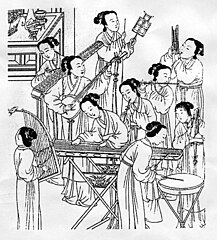Symbolic-Melody-Identification

A Convolutional Approach to Melody Line Identification in Symbolic Scores
MENU
INSPECTION
In this section of the website, we try to understand how the Convolutional Neural Network is working under the hood.
Sound files
First of all, we propose to listen to the output of our model and to the ground truth. These are two examples: in the first one the model trained on the Mozart dataset manages to detect almost all the melody notes, in second one, instead, it fails. It is nice to note how the introduction is predicted correctly.
Gluck - Die Sommernacht
The original one:
sounds/gluck_sommernacht_cm.original.mp3
The prediction made by the model trained on the Mozart dataset:
sounds/gluck_sommernacht_cm.mp3
Liszt - Die Glocken Von Marling
The original one:
sounds/liszt_die_glocken_von_marling.original.mp3
The prediction made by the model trained on the Mozart dataset:
sounds/liszt_die_glocken_von_marling.mp3
Saliency with Guided Backpropagation
As first attempt to inspect the network, we computed the saliency map as described in this tutorial, following the Springenberg et al. (2015) method.
These are some of the images we created. We also computed the histogram of the predicted values greater than zero and we compared it to the distribution of the ground truth. We also plotted the value of the computed threshold to visualize the distribution of the values.
Liszt - Die Glocken Von Marling
Schubert - Ave Maria (excerpt)
Mozart - KV475 - first movement (excerpt)
Proposed saliency
Since we were not able to grasp meaningful information from the previous saliency, we implemented an ad hoc method to inspect the CNN. This method can be used to query any neural network where the input is of the same size as the output. With this inspection method, we can ask to the network why a certain region was predicted in a certain way. In these images, the green rectangle is the subject of the query. The top image shows the input pianoroll, the middle image shows the CNN prediction, while the bottom image shows which pixel have contributed to that prediction (positive values) and which have instead hindered that prediction (negative values). The analyzed excerpt is the first window (two quarters) of Die sommernacht by Gluck.













